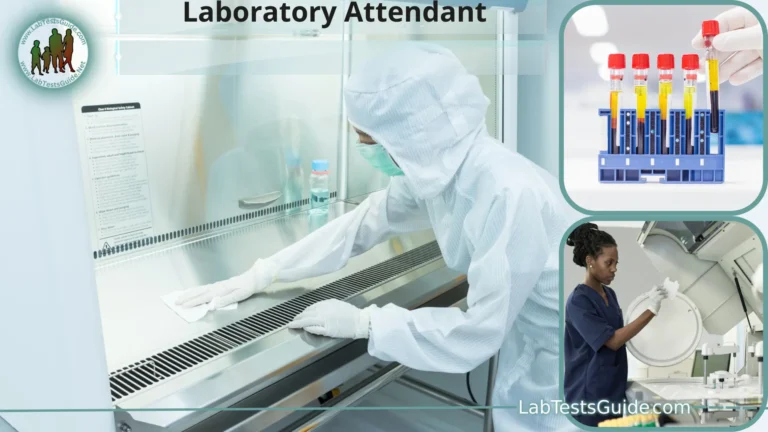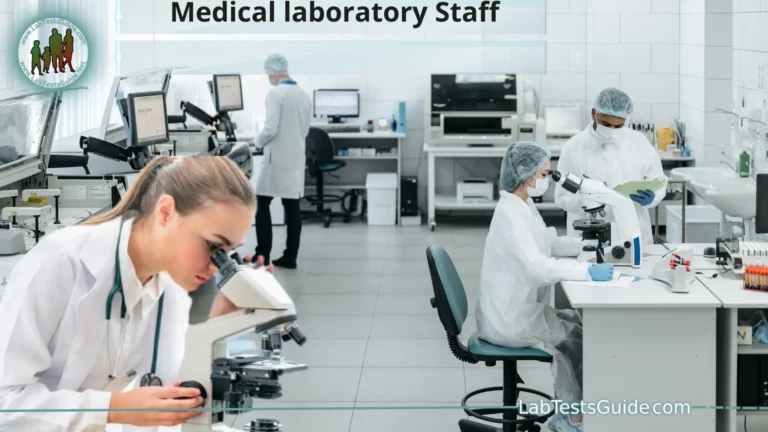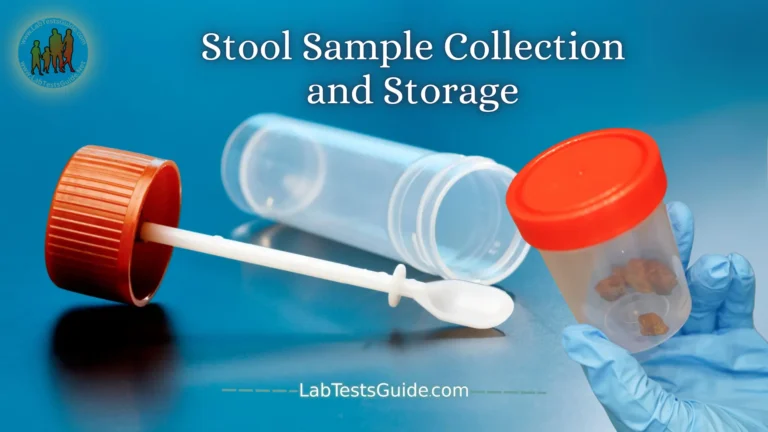Pathology laboratory Waste Management and SOPs
Pathology laboratory waste management involves the proper handling, segregation, collection, transportation, treatment, and disposal of waste generated during medical tests and procedures. This waste includes hazardous and non-hazardous materials, such as chemicals, infectious materials, and sharps.

The management of pathology laboratory waste is crucial to prevent the spread of infections and minimize the environmental impact of medical waste. Proper segregation, collection, transportation, treatment, and disposal of laboratory waste should be done in compliance with local regulations and guidelines.
Best Practices for Managing Laboratory Waste – 6 Tips and Guidelines
Some of the best practices for the management of pathology laboratory waste include:
- Segregation: The waste should be segregated into different categories, such as sharps, infectious waste, chemical waste, and non-hazardous waste.
- Collection and transportation: The waste should be collected in leak-proof containers and transported in designated vehicles to a central facility for treatment and disposal.
- Treatment: The waste should be treated using appropriate methods such as autoclaving, incineration, or chemical disinfection to ensure that it is safe for disposal.
- Disposal: The treated waste should be disposed of in an environmentally sound manner, either by landfilling or by recycling, depending on the type of waste and the local regulations.
- Training and education: All personnel involved in handling pathology laboratory waste should receive proper training and education to ensure they understand the importance of proper waste management and are equipped with the necessary knowledge and skills.
- Record keeping: Accurate records should be maintained for the generation, collection, transportation, treatment, and disposal of laboratory waste to ensure compliance with local regulations and guidelines.
It is essential to have a comprehensive waste management plan in place to ensure the safe and responsible management of pathology laboratory waste. This can help minimize the risk of infections and protect the environment. Regular training and awareness programs can also help staff and laboratory personnel understand the importance of proper waste management practices.
Types of Waste:
Pathology lab waste is a type of medical waste that requires careful management to prevent the spread of infections and minimize the environmental impact. Here are some of the types of waste that are commonly generated in pathology labs:
- Sharps waste: This includes needles, syringes, scalpels, and other sharp objects that can puncture the skin and potentially spread infections.
- Infectious waste: This includes materials contaminated with blood or other bodily fluids, such as tissue samples, swabs, and cultures.
- Chemical waste: This includes various chemicals used in pathology testing, such as formalin, xylene, and alcohol. These chemicals can be hazardous to human health and the environment if not properly handled and disposed of.
- Radioactive waste: This includes materials used in nuclear medicine testing, such as used syringes and vials.
- Non-hazardous waste: This includes general waste generated in the lab, such as paper, plastic, and glass.
Waste Segregation:
Waste segregation is the process of separating different types of waste materials into designated categories based on their characteristics, such as hazard level, physical state, and composition. Proper waste segregation is essential to ensure the safe and effective handling, storage, transportation, treatment, and disposal of waste.
The following are some key benefits of proper waste segregation:
- Prevents contamination: Separating hazardous and non-hazardous waste materials can prevent contamination of the environment and human health.
- Increases recycling: Segregating recyclable materials, such as paper, plastic, and metal, can increase recycling rates and reduce waste disposal costs.
- Improves safety: Separating sharps waste and other hazardous materials from non-hazardous waste can prevent injuries and infections to waste handlers and others who come into contact with the waste.
- Complies with regulations: Proper waste segregation is often required by local and national regulations, and failure to comply can result in fines and penalties.
To effectively segregate waste, it is important to identify the different types of waste generated in a given setting and establish clear procedures for handling each type of waste. Waste segregation can be done through color coding of bins or containers, labeling of waste, and training of personnel on proper waste handling practices.
Waste Collection and Transportation:
Waste collection and transportation is an essential part of waste management, as it involves the safe and efficient removal of waste from its point of origin to a central location for treatment and disposal. Proper collection and transportation of waste can help reduce the risk of environmental contamination and human health hazards.
Here are some key steps to follow for effective waste collection and transportation:
- Use appropriate containers: Waste should be placed in containers that are appropriate for the type of waste being collected. For example, sharps should be placed in puncture-resistant containers, while chemical waste should be stored in leak-proof containers.
- Label containers: All waste containers should be clearly labeled with the type of waste they contain, the date they were filled, and any other relevant information.
- Transport waste safely: Waste should be transported in vehicles that are appropriate for the type and quantity of waste being transported. The vehicle should be equipped with spill kits, fire extinguishers, and other safety equipment as necessary.
- Follow local regulations: Waste collection and transportation should be conducted in compliance with local and national regulations, including requirements for permits, licenses, and training.
- Record keeping: Accurate records should be maintained for the collection and transportation of waste, including the date, time, and location of collection, the type and quantity of waste collected, and the destination of the waste.
By following these steps, waste collection and transportation can be conducted safely and efficiently, minimizing the risk of environmental contamination and human health hazards. Proper waste collection and transportation is critical to the overall effectiveness of waste management and the protection of public health and the environment.
Waste Treatment:
Pathology laboratory waste management involves the proper handling, treatment, and disposal of various types of waste generated in pathology labs, such as chemical, biological, and radioactive waste. Here are some common methods of waste treatment for pathology laboratory waste:
- Chemical waste treatment: Chemical waste generated in pathology labs can be treated using various methods, such as chemical neutralization, oxidation, or reduction, to make them safe for disposal. Chemical waste should be segregated based on its hazard level and compatibility with other chemicals.
- Biological waste treatment: Biological waste generated in pathology labs, such as tissue samples and biological fluids, should be treated using methods such as autoclaving or incineration to inactivate any pathogens and make them safe for disposal.
- Radioactive waste treatment: Radioactive waste generated in pathology labs should be treated using specialized methods, such as storage in shielded containers or radioactive decay, to minimize the exposure to radiation and ensure safe disposal.
- Sharps waste treatment: Sharps waste generated in pathology labs, such as needles and blades, should be treated using methods such as autoclaving or shredding to prevent injuries and make them safe for disposal.
- Hazardous waste treatment: Hazardous waste generated in pathology labs, such as solvents and reagents, should be treated using methods such as distillation or chemical stabilization to make them safe for disposal.
Proper waste treatment is critical to ensure the safe and effective disposal of pathology laboratory waste. Waste should be segregated based on its hazard level and compatibility with other waste, and appropriate treatment methods should be used to minimize environmental impact and protect public health.
Waste Disposal:
Proper waste disposal is an important part of pathology laboratory waste management, as it ensures that waste is handled and disposed of safely and responsibly to prevent harm to public health and the environment. Here are some common methods of waste disposal for pathology laboratory waste:
- Chemical waste disposal: Chemical waste generated in pathology labs should be disposed of through a licensed hazardous waste disposal company. The waste is typically collected in a container and transported to a facility that is licensed to receive and dispose of hazardous waste.
- Biological waste disposal: Biological waste generated in pathology labs should be disposed of through a licensed biological waste disposal company. The waste is typically collected in a container and transported to a facility that is licensed to receive and dispose of biological waste.
- Radioactive waste disposal: Radioactive waste generated in pathology labs should be disposed of through a licensed radioactive waste disposal company. The waste is typically collected in a container and transported to a facility that is licensed to receive and dispose of radioactive waste.
- Sharps waste disposal: Sharps waste generated in pathology labs should be disposed of in puncture-resistant containers and disposed of through a licensed medical waste disposal company. The waste is typically collected in a container and transported to a facility that is licensed to receive and dispose of medical waste.
- Non-hazardous waste disposal: Non-hazardous waste generated in pathology labs, such as paper and plastic waste, should be disposed of through a licensed solid waste disposal company. The waste is typically collected in a container and transported to a facility that is licensed to receive and dispose of solid waste.
Proper waste disposal is critical to the overall effectiveness of pathology laboratory waste management. It is important to comply with local and national regulations for waste disposal, including requirements for permits, licenses, and training. By following proper waste disposal practices, pathology labs can minimize their environmental impact and protect public health.
Training and Education:
Training and education are essential components of pathology laboratory waste management. Proper training ensures that all laboratory personnel are aware of the risks associated with handling waste and are equipped with the necessary knowledge and skills to handle and dispose of waste safely and responsibly. Here are some key elements of training and education for pathology laboratory waste management:
- General awareness training: All laboratory personnel should receive general awareness training on the risks associated with handling waste, including chemical, biological, radioactive, and sharps waste. This training should cover the importance of waste segregation, labeling, and disposal practices.
- Hazard-specific training: Laboratory personnel should receive specific training on the risks associated with the types of waste they handle, including chemical, biological, radioactive, and sharps waste. This training should cover the appropriate handling, labeling, and disposal practices for each type of waste.
- Personal protective equipment (PPE) training: Laboratory personnel should receive training on the proper use and disposal of PPE, including gloves, gowns, and masks. This training should cover the types of PPE needed for specific tasks and the proper disposal of used PPE.
- Emergency response training: Laboratory personnel should receive training on emergency response procedures in the event of a spill or other hazardous waste incident. This training should cover procedures for containing and cleaning up spills, as well as procedures for reporting incidents to the appropriate authorities.
- Regulatory compliance training: Laboratory personnel should receive training on local, state, and federal regulations governing waste handling and disposal. This training should cover requirements for waste segregation, labeling, and disposal practices, as well as requirements for permits, licenses, and training.
Proper training and education are critical to ensuring the safe and responsible handling and disposal of pathology laboratory waste. By providing ongoing training and education to laboratory personnel, pathology labs can minimize the risks associated with waste handling and disposal and protect public health and the environment.
Record keeping :
Record-keeping is an essential component of pathology laboratory waste management, as it ensures that waste handling and disposal practices are properly documented and comply with local, state, and federal regulations. Proper record-keeping also allows pathology labs to track waste generation and disposal trends and identify opportunities for waste reduction and cost savings. Here are some key elements of record-keeping for pathology laboratory waste management:
- Waste generation records: Pathology labs should maintain records of the types and quantities of waste generated, including chemical, biological, radioactive, and sharps waste. These records should include the date and location of waste generation and the identity of the person responsible for waste generation.
- Waste segregation and labeling records: Pathology labs should maintain records of waste segregation and labeling practices, including the types of waste containers used, the location of waste containers, and the labeling of waste containers. These records should include the date and location of waste segregation and labeling and the identity of the person responsible for waste segregation and labeling.
- Waste transportation records: Pathology labs should maintain records of waste transportation, including the name and license number of the waste transporter, the date and time of waste transport, and the destination of the waste. These records should include the identity of the person responsible for waste transportation.
- Waste disposal records: Pathology labs should maintain records of waste disposal, including the name and license number of the waste disposal facility, the date and time of waste disposal, and the types and quantities of waste disposed. These records should include the identity of the person responsible for waste disposal.
- Regulatory compliance records: Pathology labs should maintain records of regulatory compliance, including permits, licenses, and training records for laboratory personnel. These records should be readily accessible for inspection by regulatory agencies.
Proper record-keeping is critical to ensuring the safe and responsible handling and disposal of pathology laboratory waste. By maintaining accurate and complete records, pathology labs can demonstrate compliance with local, state, and federal regulations and identify opportunities for waste reduction and cost savings.
Waste Containers and Bags:
There are different types of waste containers and bags used in pathology laboratory waste management. Here are some common types:
- Sharps containers: These are rigid, leak-proof, puncture-resistant containers designed to hold sharps waste such as needles, lancets, and scalpels. Sharps containers are usually made of plastic or metal and have a locking mechanism to prevent accidental access to the contents. Sharps containers are usually red or yellow in color.
- Biohazard bags: These are plastic bags used to collect and transport biohazardous waste, such as blood-soaked materials, tissues, and cultures. Biohazard bags are usually red or orange in color and have the biohazard symbol printed on them. Biohazard bags are usually red or orange in color.
- Chemical waste containers: These are containers used to collect and store chemical waste, such as solvents, acids, and bases. Chemical waste containers should be made of compatible materials that can resist the chemical being stored, and should be clearly labeled with the type of chemical waste and any hazards associated with it. The containers for different types of chemical waste are usually color-coded as per the standard, for example, blue containers for metal waste and yellow containers for chemical waste.
- Non-hazardous waste containers: These are containers used to collect and store non-hazardous waste, such as paper, plastic, and food waste. Non-hazardous waste containers should be clearly labeled with the type of waste and should be designed to prevent leaks and spills. Non-hazardous waste containers are usually green or gray in color.
- Autoclave bags: These are bags used to collect and transport waste that has been sterilized by autoclaving, such as biohazardous waste and sharps waste. Autoclave bags are usually clear or transparent and are designed to withstand high temperatures and pressure during autoclaving. Autoclave bags are usually clear or transparent.
Proper selection and use of waste containers and bags is essential for ensuring the safe and responsible handling and disposal of pathology laboratory waste. Pathology labs should ensure that waste containers and bags are compatible with the type and quantity of waste generated, and that they are properly labeled, color-coded, and segregated.
References:
- Centers for Disease Control and Prevention. (2003). Guidelines for Safe Work Practices in Human and Animal Medical Diagnostic Laboratories. https://www.cdc.gov/niosh/docs/2004-136/pdfs/2004-136.pdf
- United States Environmental Protection Agency. (2016). Managing Hazardous Waste: A Resource for Small Businesses. https://www.epa.gov/sites/production/files/2016-02/documents/small-business-hazardous-waste-guide.pdf
- World Health Organization. (2011). Safe Management of Wastes from Health-Care Activities. Second edition. https://www.who.int/publications/i/item/9789241548564
- American Society for Clinical Laboratory Science. (2012). Biosafety and Biosecurity in the Clinical Laboratory: Principles, Protocols, and Practices. https://ascls.org/Portals/0/docs/position-papers/biosafety-and-biosecurity-in-the-clinical-laboratory.pdf
- Occupational Safety and Health Administration. (2011). Bloodborne Pathogens Standard. 29 CFR 1910.1030. https://www.osha.gov/sites/default/files/law-regs/regulations/standardnumber/1910/1910.1030.pdf
- National Institutes of Health. (2002). Guidelines for Research Involving Recombinant DNA Molecules. https://osp.od.nih.gov/wp-content/uploads/2019/02/NIH_Guidelines.pdf
Possible References Used






